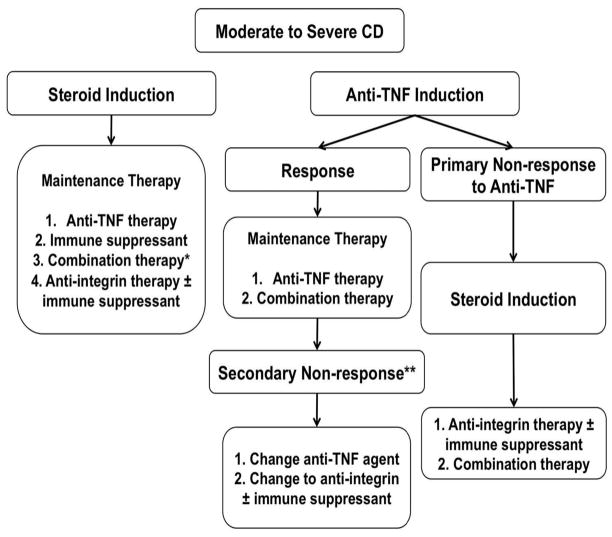Figure 2.
Proposed algorithm for treatment of moderate to severe Crohn’s disease. Remission may be induced either with corticosteroid therapy (intravenous or oral) with transition to maintenance therapy using anti-TNF agents, immune suppressants, combination therapy (anti-TNF therapy with immune suppressant), or anti-integrin therapy with or without immune suppressant. In patients in whom remission is induced with anti-TNF agents, that agent is continued for maintenance therapy if the patient responds to induction therapy. In cases of primary nonresponse to anti-TNF induction, remission may be induced with corticosteroid therapy. In that case, either an immune suppressant or anti-integrin agents with or without an immune suppressant may be used for maintenance therapy. * Anti-TNF and immune suppressant (azathioprine, mercaptopurine, methotrexate). ** Consider addition of immune suppressant, rather than switching within or outside of drug class, in patients with low titer antibodies. NB: In symptomatic patients, active disease should be confirmed prior to therapeutic changes. In addition, therapeutic drug monitoring should be performed, if available (infliximab, adalimumab, azathioprine, mercaptopurine) to ensure dose optimization.

